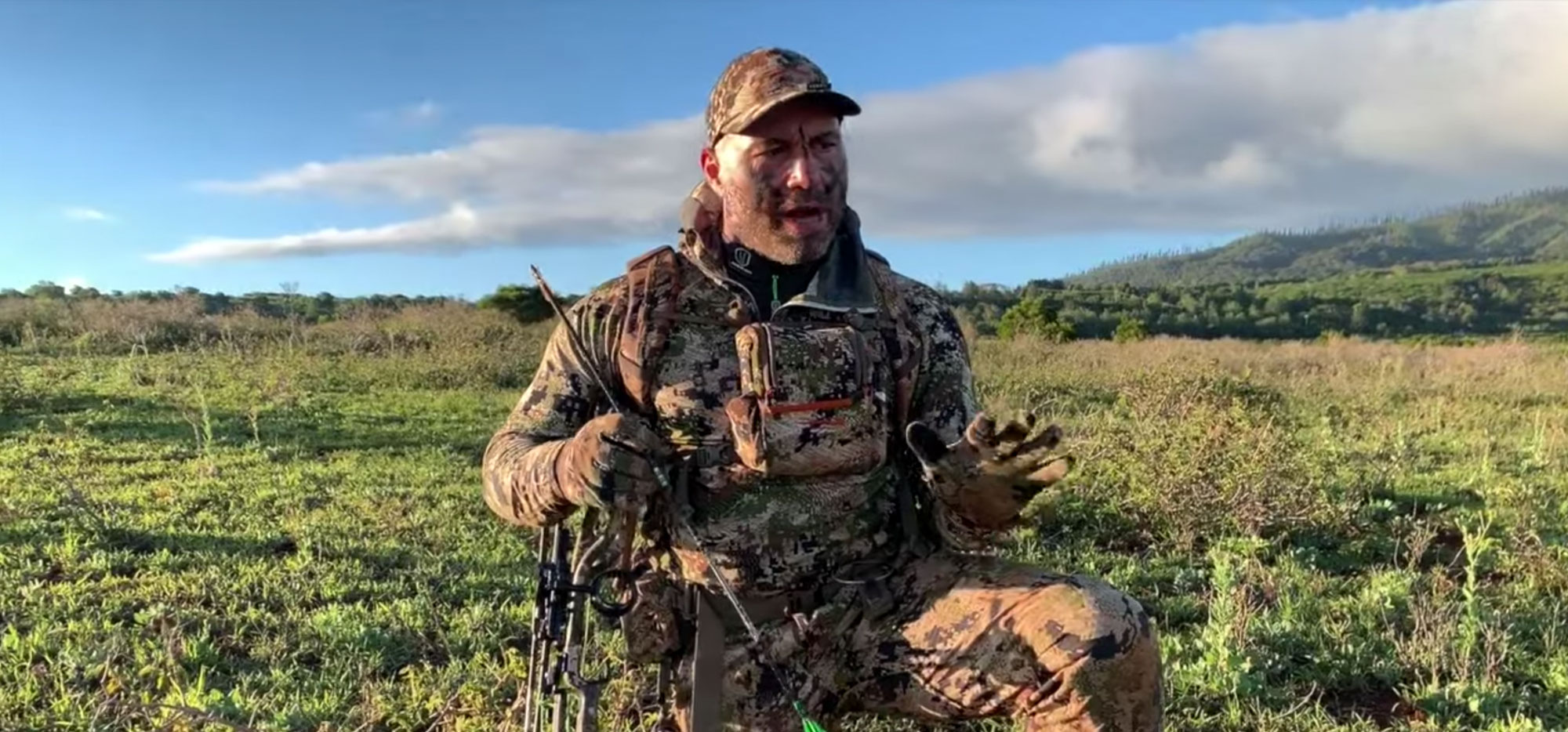Mastering the Moment: Bowhunting Axis Deer in Lanai's Challenging Conditions
When you’re perched behind sparse cover with Axis deer on high alert, success comes down to seconds of perfect execution. One twitch, one moment of impatience, or one gust of wind can erase hours of careful stalking. These situations separate casual bowhunters from those who’ve developed the mental discipline to execute when everything is on the line.
That’s exactly the scenario I found myself coaching through on Lanai’s wind-swept terrain. With Joe Rogan at full draw and a trophy Axis buck in range, the difference between success and failure wasn’t fancy equipment or complicated strategies – it was mastering the fundamentals under pressure.
This hunt perfectly demonstrated why patience, shot timing, and proper equipment selection create the foundation for ethical bowhunting success, especially when pursuing pressured game in challenging environments. Let me break down what made this hunt successful and the critical lessons any serious bowhunter should apply to their approach.
Timing is Everything: Reading Wind and Animal Behavior
“Just let the wind slow down.”
Those five words encapsulate one of bowhunting’s most critical skills – patience in the moment. Wind creates multiple challenges: it affects arrow flight, increases the chance of detection, and influences animal behavior. On Lanai, where consistent 15-20 mph winds are common, timing your shot during brief lulls becomes essential.
Axis deer present a particular challenge because they’re hunted year-round on the island. This creates a hyper-vigilant animal that’s programmed to detect and respond to the slightest irregularity. They don’t just look for danger – they’re constantly processing their environment through all senses.
During our stalk, I noted several behavioral patterns:
- Frequent head raising and scanning, even while feeding
- Quick responses to any movement in their peripheral vision
- Tendency to position themselves with escape routes clearly established
- Using the wind to their advantage by feeding in positions that give them scent coverage
Recognizing these patterns allowed us to time our movements accordingly. We advanced when heads were down and focused on feeding. We froze completely during scanning sequences. Most importantly, we waited for the perfect combination of deer position, wind speed, and clear shooting lanes before drawing.
This patience paid off. Despite the buck “jumping the string” (reacting to the sound of the bowstring), the arrow reached its target before the deer could fully react – a testament to modern equipment’s speed and the importance of proper shot timing.
Overcoming Environmental Challenges
Bowhunting in dense cover creates a constant battle between concealment and shooting lanes. On Lanai, the terrain offers minimal natural blinds, often forcing hunters to work with whatever sparse vegetation is available. This creates a delicate balance between getting close enough for a shot while maintaining adequate cover.
The shooting position we established provided concealment but presented a critical obstacle – a small branch directly in the potential arrow path. In bowhunting, these aren’t just inconveniences; they’re potential hunt-enders. An arrow deflecting off a twig the diameter of a pencil can mean the difference between a clean harvest and a completely missed opportunity.
To overcome these environmental challenges:
- Identify obstacles before drawing – Mentally map the entire arrow flight path
- Position for success – Sometimes shifting just 6 inches can clear a shooting lane
- Use the wind strategically – Time shots during gusts when ambient noise masks drawing motion
- Stay at full cover until the moment of truth – Resist the urge to expose yourself for a better view
These practices become even more critical when hunting pressured animals. Axis deer on Lanai face consistent hunting pressure, making them among the most challenging big game animals to approach with a bow. Their awareness level rivals that of mature whitetails in heavily hunted areas, but with the added advantage of open terrain where they can spot danger from greater distances.
Equipment Selection for Ethical Harvests
The successful harvest provided a perfect opportunity to evaluate modern broadhead technology in a real-world application. The Rage No-Collar mechanical broadhead performed exceptionally well, demonstrating why equipment selection matters for ethical bowhunting.
The advantages of this system became immediately apparent during the recovery:
- The mechanical design allowed for field-point accuracy during the challenging, windy shot
- Upon impact, the broadhead created a devastating wound channel
- The blood trail was substantial and easy to follow
- The deer was recovered quickly, having expired within seconds of the shot
What makes this broadhead design particularly effective is the spring-loaded deployment system that eliminates the need for rubber collars or O-rings. This addresses one of the most common failure points in mechanical broadheads. The blades remain securely closed during flight, then deploy reliably on impact.
For bowhunters concerned about equipment reliability, this represents a significant advancement. The broadhead maintained its integrity even after passing through the animal, with the blades easily resetting to their closed position. This level of durability builds confidence, especially when traveling to remote hunting locations where replacement equipment isn’t readily available.
Applying These Lessons to Your Hunting Approach
Whether you’re pursuing Axis deer on Lanai or whitetails in the Midwest, the fundamentals remain consistent. Success in bowhunting pressured game comes down to:
- Patience in the moment – Let conditions become favorable before executing
- Environmental awareness – Identify and account for obstacles before drawing
- Equipment confidence – Select and thoroughly test gear that delivers consistent, ethical performance
- Mental discipline – Maintain composure when opportunities present themselves
The shot on Lanai perfectly illustrated these principles in action. Despite the buck’s alertness, the challenging wind, and the minimal cover, success came through disciplined execution of fundamentals rather than complicated techniques.
As you prepare for your next bowhunting adventure, remember that the most crucial moments often come down to the simplest decisions: waiting for the wind to slow, avoiding that branch in your shooting lane, and maintaining your concealment until the perfect moment presents itself. Master these fundamentals, and you’ll find success regardless of the species or terrain you’re hunting.
The ultimate reward isn’t just the harvest itself, but the knowledge that you executed a clean, ethical shot under challenging conditions – the true mark of an accomplished bowhunter.





 massmonopoly
massmonopoly